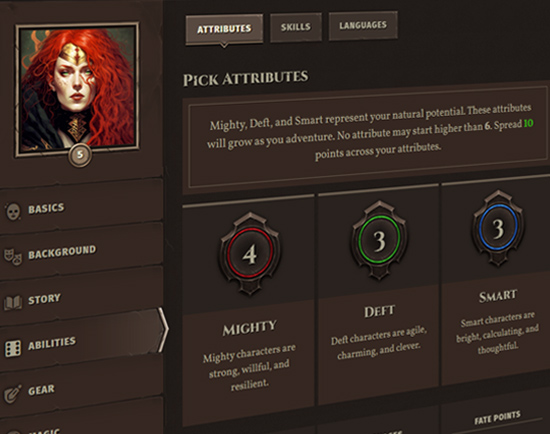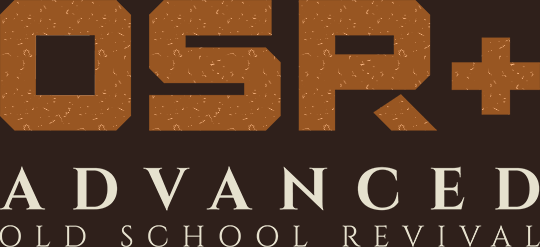RPGs are social games. RPGs are deeply personal games. And while RPGs are games of fiction, they're unique in that they involve players adopting roles and carrying out the goals of fictional characters whose ambitions are not our own. Bleed happens as a result, where the emotions from a character or the events of a scene affect players out of game.
The Writers' Room
Imagine a writers' room where a bunch of creative people are brainstorming the plot of a TV show. There's a showrunner who's responsible for fielding ideas and deciding what sticks and what doesn't. There's a certain cadence to the conversation that everyone is familiar with when pitching ideas. Ideas are tossed into the ether and the writers run with the ones that excite them. Along the way, lots of stupid ideas get pitched, and no one bats an eye. The writers' room works because no idea is sacred, and everyone expects to voice a stupid idea to the group at some point.
The RPG as Writers' Room
In order for any safety and inclusion tools to work in RPGs, we need to first treat the roleplaying game like the writers' room. The table needs to be a safe place where players can collaborate on the shared narrative without fear of ostracization or reprisal. We need to accept that people will make mistakes, and that intent matters. Eventually, something offensive to someone is going to get uttered at the table. This is because roleplaying games are inherently improvisational, and therefore inherently unpredictable.
The beauty of the writers' room mentality, however, is that no idea is sacred. We can reject an offensive idea without rejecting the player. Maybe it doesn't suit our premise. Maybe it doesn't suit the values of the majority of players at the table. Or maybe it just goes too far. Whatever the case, the writers' room mentality is a reminder to everyone at the table (including the GM) that we're here to figure things out, and that everybody deserves an opportunity to try.
Safety Tools
These tools may or may not be necessary for your table. If you're unsure if you need them, or you don't know your players very well, then try using some of them. If you've been playing with your group for a long time, you may have an unspoken social contract in place that already resolves the issues these tools try to fix. In other words: if it ain't broke, don't fix it!
Using Flags
Also known as the "X-Card" (Safety Tools for Simulations and Role-Playing Games by John Stavropoulos), this is a way for players to pull the brakes on a scene when it makes them uncomfortable.
How Flags Work
If you're playing in person, you can provide every player with a flag (a red piece of paper, or a tiny paper flag) that they can raise in the event something triggers them. If you're playing online, keep your direct messages open so players can send you a flag emoji privately.
Once a player raises a flag, you pause the scene. You may need to ask the player what aspect of the scene is problematic to them (is it the spider monster? is it being cornered in a dark alley by thugs?), but don't question them about why it upsets them or try to probe for further details. You're only asking to figure out what about the scene you need to fix.
Consensus Matters
First, ask the group if they're okay with accommodating this request. Remember that the table is for everyone, not just the triggered player. It may be necessary to ask the player to temporarily leave the table if there isn’t consensus. If there is consensus, try resetting the table; for example, reframe the spider monster so that it's a pig monster or reset the scene to take place in a brightly-lit, open area of the city.
Lastly: if it's your narration that's the problem, simply fast-forward through it. For example, if you’re describing in exhaustive detail the grotesque anatomy of an insect and your player has an intense fear of insects, stop doing that and move on!
In short: the fiction is always flexible, but people's well-being is not.
Using Lines & Veils
While flags are a reactive tool to use in play, "Lines and Veils" (first formalized by Ron Edwards in Sex and Sorcery from the Sorcerer RPG) are a proactive tool that begins in session zero and can later be invoked in play. In its original form, "lines" are subject matter the players and the GM will never depict in the game (e.g., murdering children), and "veils" are subject matter that may be depicted in the background, but won't be roleplayed by players or the GM (e.g., a sex scene).
Establishing Content Ratings
In session zero, we set expectations around the sort of game we want to play (beginning with the premise and then by developing story hooks), but we don't necessarily talk about putting in place safeguards against the psychological impact that content may have on our real-life selves. If this is something we're concerned about, then it makes sense to ask the table a few questions in session zero:
- If our RPG were a movie, what The MPAA's film ratings as a conceptual model here, acknowledging that they are inherently flawed. content rating would it have? (G? PG? R? NC-17?). This question is often already answered by the tone set by the premise, but if anyone is unsure, it doesn't hurt to ask.
- Is there any subject matter we don't want to appear in the game? Players can be as broad or specific as needed, including: violence against children or animals, sexual assault, physical or mental abuse, or genocide; horror, gore, or phobias; slavery; romantic relationships or depictions of sex; torture; cultural issues such as racism, gender, homophobia, ableism, real-world religion, sexism, disabilities, ageism, or transphobia; or the use of not-safe-for-work language.
- How do we feel about player vs. player conflict? Many players enjoy roleplaying games specifically because they're collaborative games and aren't expecting other people at the table to become adversaries.
Using Script Changes
Another reactive tool (similar to flagging) is the “Script Change” by Beau Jagr Sheldon.
When something problematic happens in the fiction, players can use a Script Change to request to rewind, pause, fast-forward, or slow down the cadence of play to accommodate their distress:
- Rewinding is a request to go back and re-do something;
- Pausing means giving the player time to reflect on the scene;
- Fast forwarding means skipping past triggering content in the same way "Veils" request that a scene fade to black;
- Slowing down means spending more out-of-game time on a fictional context so that the player can roleplay through it more comfortably.
GM-to-GM Advice
I find the language surrounding the Script Change a bit too granular for my taste, especially where a flag might suffice and be more efficient in practice. That being said, a Script Change can be especially useful in emotionally complex OSR+ game modes like downtime.
Another thing to consider is that, like the flag, a Script Change should require consent on both ends of the table: if the majority of players are unwilling to rewind and spend time retconning a scene, the table shouldn’t be compelled to do so. In this case, we move on for the sake of the affected player’s emotional well-being, but the events that transpired in the fiction remain canonical.
Roses, Thorns, and Buds
The origin of this activity is unclear, but various articles suggest that the Boy Scouts of America are responsible for first using it. The original idea is that scouts would reflect on their experiences in the following methodical way:
- A rose is a positive takeaway about the experience;
- A thorn is a negative takeaway about the experience;
- And a bud is a new insight learned as a result of the experience.
In RPGs, tables usually engage in this activity after the session is over, primarily as a means of decompressing. You'll find that advice surrounding roses and thorns reinforces the idea that players should discuss how they felt about the experience, in order to process their emotions. In fact, guides about this activity explicitly say that the reason you do roses and thorns is not for the GM to get feedback about the session, but strictly to help players emotionally decompress.
GM-to-GM Advice
I think the advice that roses and thorns should be about processing emotions rather than gathering feedback is misguided. Roleplaying games are not therapy sessions, and the table should not be responsible for processing players’ emotions.
There’s also a kernel of coercion involved in this activity: some players may not be comfortable being asked to publicly discuss how they felt about the session, and it may create an competitive atmosphere where players who receive the least positive feedback feel inadequate at the table. Instead, I recommend conducting an anonymous survey of your players from time to time, or asking them to privately share their concerns with you to gather feedback about improving future sessions.
Taking Breaks
This one's really simple: take breaks! A session of OSR+ lasts three hours. I typically give my players at least a five-minute break halfway through. While you don’t want players disappearing in the middle of initiative or asking others to recap what they missed after a harrowing downtime, players should feel empowered to step away at any time they need to.
At the same time, you too should feel empowered to take a break if you're overwhelmed managing the session.
As a GM, you're always "on," so taking a break means halting the entire game. There are a couple ways to surreptitiously take mini-breaks to gather your thoughts by putting the spotlight back on your players. For example:
- Change the game mode to a downtime, so that the spotlight rotates over the players for the next 10 minutes.
- Ask the players to contribute something to the scene. For example, if they just entered a scene that you aren't prepared to describe, put the onus on the players to add details. This will buy you at least 5 minutes to think, and all you need to do after each player adds a detail is summarize their input before moving the spotlight to someone else.
 Archetypes
Archetypes Armor
Armor Classes
Classes Conflicts
Conflicts Cultures
Cultures Ethos
Ethos Flaws
Flaws Glossary
Glossary Kits
Kits Maleficence
Maleficence Origins
Origins Shields
Shields Skills
Skills Spells
Spells Stances
Stances Status Effects
Status Effects Tactics
Tactics Talents
Talents Techniques
Techniques Treasure
Treasure Weapons
Weapons











 Hall of Heroes
Hall of Heroes Hall of Legends
Hall of Legends



 Dungeons & Flagons
Dungeons & Flagons